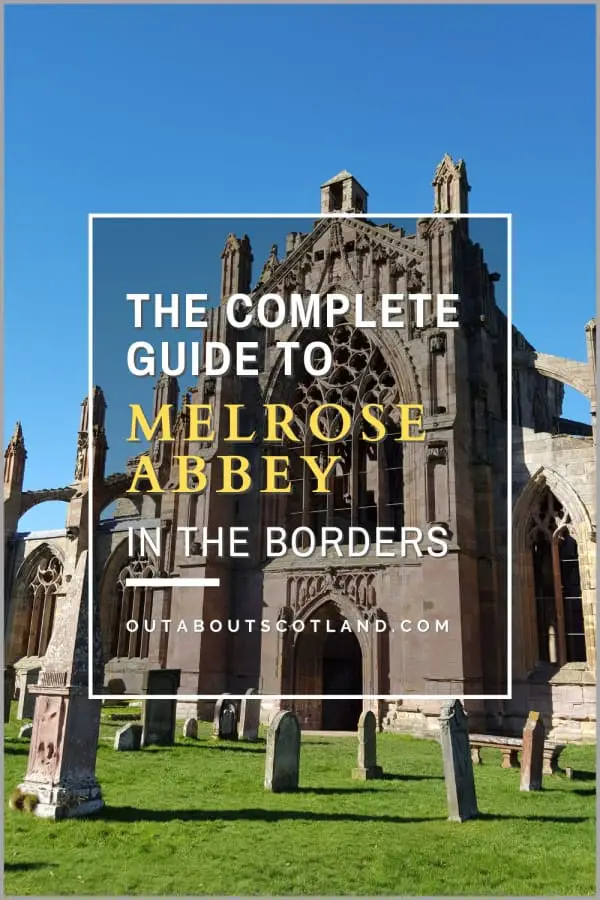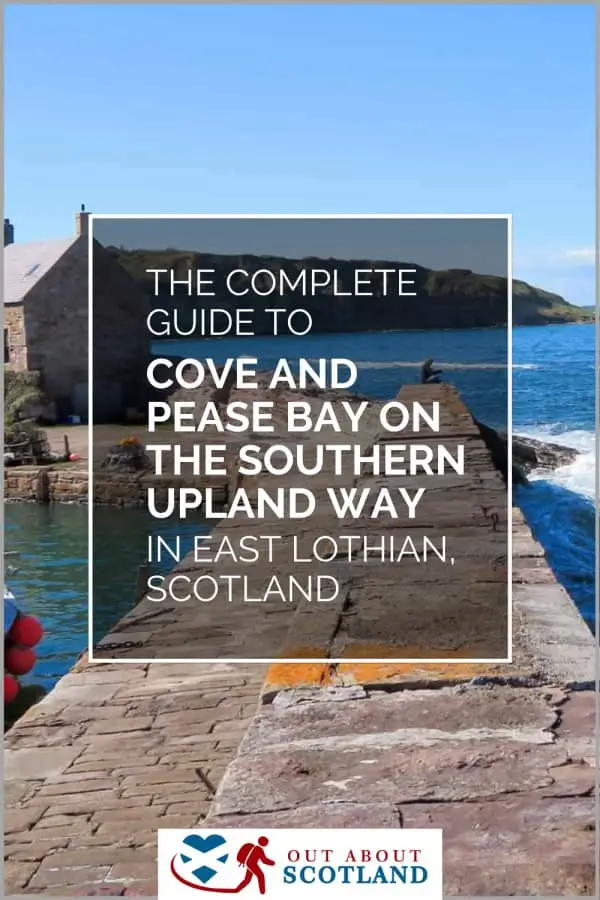Located in the southeast of Scotland, the Scottish Borders is a region full of history, culture, and unparalleled natural beauty. It stretches from the rolling hills and moorland of the west, through gentler valleys to the rich agricultural plains of the south, towards the many attractions of the Lothians to the north, and onto a rugged coastline that meets the North Sea on its eastern edge.
The Scottish Borders is known for its turbulent past that has been marked by centuries of conflict between Scotland and England, but it’s also home to some of the most beautiful religious sites in the country including the impressive abbeys of Melrose, Dryburgh, Jedburgh, and Kelso. The region is also home to grand stately homes like Mellerstain House, Abbotsford (home of Sir Walter Scott), and Floors Castle, all of which offer a glimpse into the affluent lifestyle of the region’s rich and powerful residents.
For outdoor enthusiasts, the Scottish Borders offers a huge range of activities. You can explore the Eildon Hills, cycle along the Tweed Valley Railway Path, fish in the River Tweed, or enjoy a leisurely round of golf on one of its many courses, and if you like long-distance walks, the Berwickshire Coastal Path (one of my favourite hiking routes) offers breathtaking views and the chance to spot seals and dolphins.
In this article, we’ll take a look at a few of the top attractions in the region that won’t cost a single penny to visit, ranging from museums and forests to superb walking trails. Join me as I uncover the charm of the Scottish Borders where history, culture, and adventure await.
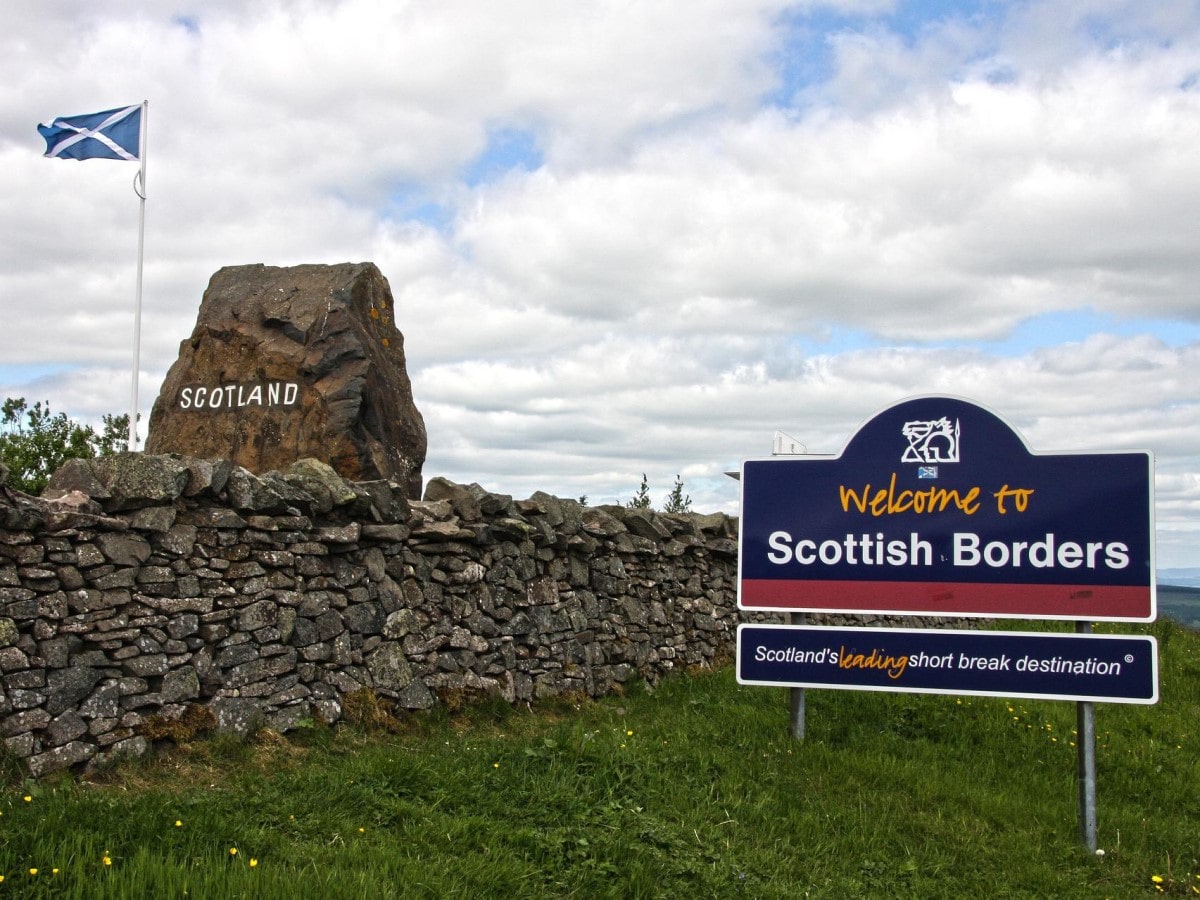
Borders Textile Towerhouse
- Address: Borders Textile Towerhouse, 1 Tower Knowe, Hawick, TD9 9BZ
- Opening Times: Apr–Oct Mon–Sat: 10.00 – 16.30, Sunday: 12.00 – 15.00. Nov – Mar Mon-Sat: 10.00 – 16.00, Tues & Sun: Closed
- Website: Borders Textile Towerhouse
The Borders Textile Towerhouse is a unique attraction located in the historic town of Hawick. This 500-year-old tower has been transformed into an interactive museum dedicated to the region’s textile industry, and it’s absolutely choc-a-block full of objects related to one of Scotland’s biggest exports.
At the museum, you can learn about the history of tweed and knitwear production in the Borders from the traditional methods used in the past to the cutting-edge technologies employed today. The museum features a variety of displays and exhibits including historical artefacts, working looms, and examples of beautiful products created by local textile manufacturers. Along with its educational offerings, the Borders Textile Towerhouse also has a shop where you can buy locally-made textiles and crafts.
It’s a fascinating place to visit for anyone interested in fashion, design, history, or local culture, and it’s located right in the heart of Hawick so it’s easy to reach and has plenty of places nearby to park the car.
Protect Your Family From Scotland's Biting Midges
- Powerful, reliable protection for up to 8 hours
- Water- and sweat resistant
- Repels midges, mosquitoes, horse flies, sand flies, fleas and ticks
- Safe for use on adults, children over 30 months and pregnant women
- Non-sticky, moisturising with a pleasant fragrance
- Packaging may vary
Coldstream Museum
- Address: 12 Market Square, Coldstream, TD12 4BD
- Opening Times: 25th Mar – 30th Sept Mon-Sat: 9.30 am – 12.30 pm and 1.00 – 4.00 pm and Sun 2.00 pm-4.00 pm. 1st – 31st Oct Mon to Sat 1.00 pm to 4.00 pm. Closed Sun.
- Website: Coldstream Museum
The Coldstream Museum is located in Coldstream, a famous town in the Scottish Borders that’s well known for its military associations. The museum features exhibitions that tell the story of the Coldstream Guards – the oldest continuously serving regiment in the British Army – which was founded all the way back in 1650.
The museum is housed in the former Coldstream Parish School, a building that dates back to 1845, and features a variety of exhibits that provide insights into the local history of Coldstream itself, the story of the Coldstream Guards, and displays relating to the Battle of Flodden.
The museum offers an enjoyable and informative experience for history enthusiasts and is free to enter, though as it’s run by a charity they do ask for voluntary donations to help with the upkeep of the building. The museum is on one level so it’s accessible to all abilities and it also has a children’s play area, a shop, and a nice wee courtyard with a picnic bench.
Cove Harbour
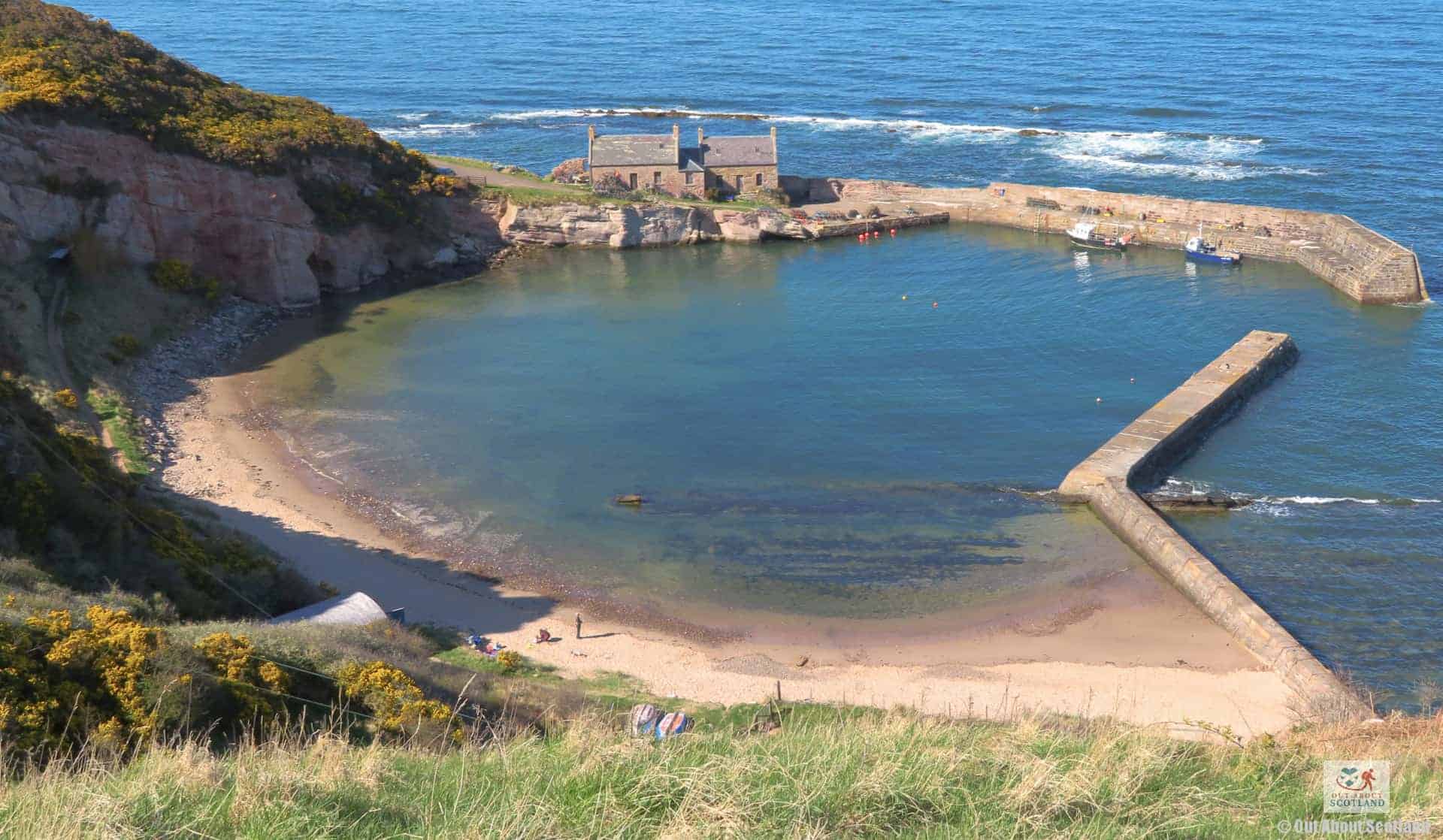
- Address: Cove, Cockburnspath, Berwickshire, TD13 5XD
- Opening Times: 24/7, 365 days a year
- Out About Scotland Guide: Cove Harbour & Pease Bay
Cove Harbour is a picturesque harbour situated on the east coast of Scotland close to Pease Bay holiday park which is easily accessible from the A1. This hidden gem is surrounded by dramatic cliffs, offers stunning views over the North Sea, and features a strip of soft golden sand that’s perfect for family days out.
The harbour consists of two small basins protected by a pier and breakwater with a handful of buildings around it including traditional fishing cottages and an old salmon house, all of which add a real sense of historic charm to the place.
To get there, head to the village of Cove and the car park facing the sea. From there you’ll see a gated path leading down a slope which enters a tunnel that’s cut through the red sandstone cliffs, at the end of which is another path that leads to the harbour. It’s a fantastic location for a sunny afternoon getaway and it’s also a good starting point for coastal hikes due to the Southern Upland Way which passes overhead on the cliff edge.
Two points to note are that there’s a steep path to reach the harbour meaning it might not be suitable for the elderly or wheelchair users, and there are no facilities in the immediate area so if you need the toilet you’ll have to drive back onto the A1 and use the public block in the layby (postcode TD13 5YU).
Book Tours in Scotland
Eyemouth Museum
- Address: Auld Kirk Manse Road, Eyemouth, Berwickshire, TD14 5JE
- Opening Times: Mon to Sun 10:00 (12:00 Sun) to 16:00
- Website: Eyemouth Museum
This is a charming local history museum nestled in the heart of Eyemouth and housed in an attractive 18th-century building. The building was once a granary, but it has now been converted into a museum that showcases the town’s fascinating past.
Eyemouth Museum is renowned for its extensive collection of artefacts and exhibits that trace the history of Eyemouth from its earliest days to the present. The collections are wide-ranging, covering aspects of the town’s social, cultural, and industrial history including items like the ‘Eyemouth Disaster Tapestry’ which is a 15-foot long tapestry that depicts the tragic events of the Great East Coast Fishing Disaster of 1881 when 189 local fishermen lost their lives.
In addition, the museum houses an impressive range of exhibits related to the once-thriving industry of fishing that characterized Eyemouth in the past, and visitors can see the old equipment used in the trade alongside photographs, personal items of the townsfolk, and even a reconstructed smugglers’ cove. The museum also offers the unique experience of a traditional ‘Fisherrow fishwives’ cottage where visitors can explore a recreated 18th-century home complete with period furniture.
Glentress Forest
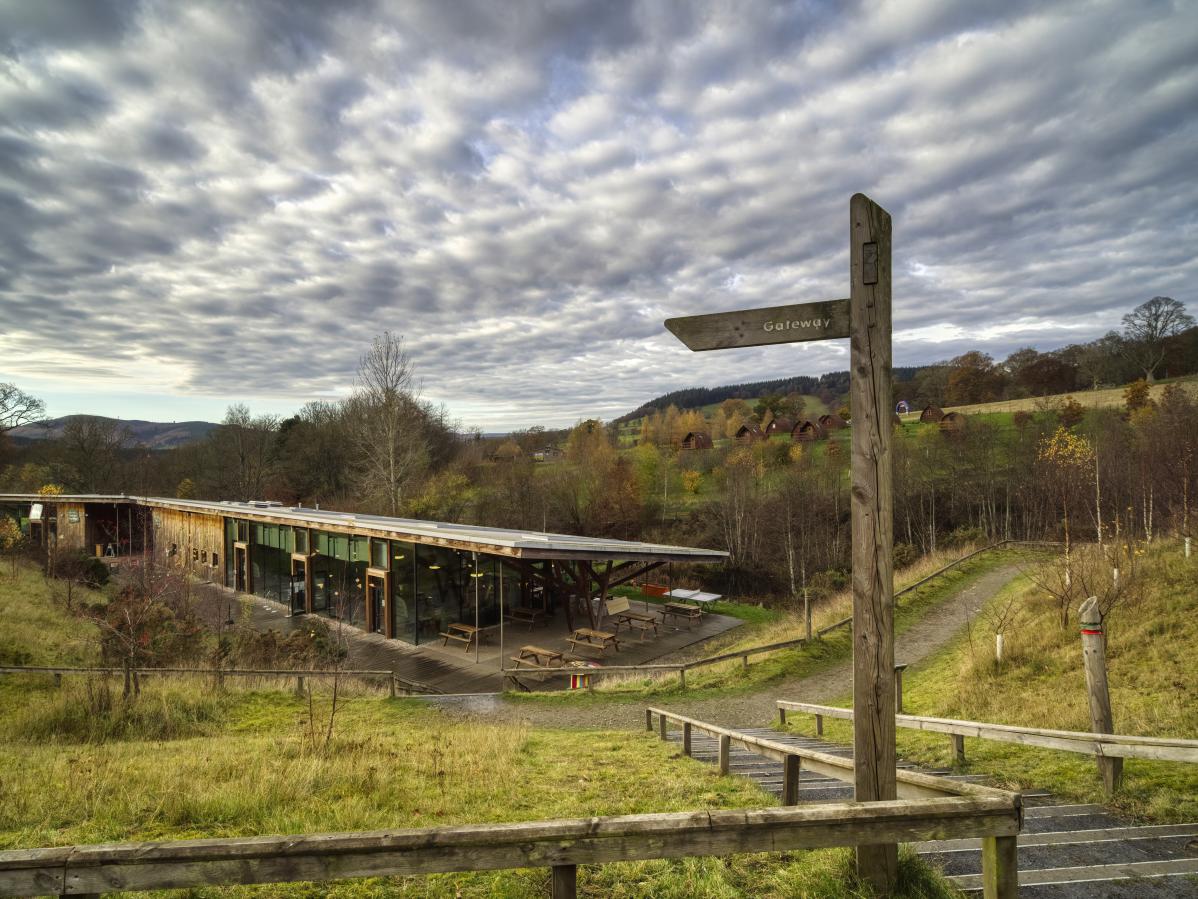
| Address: | Glentress Peel, Peebles, EH45 8NB |
| Opening Hours: | The Gateway Building is open daily, weekdays from 9am - 5pm and 9am - 6pm at weekends. The Peel Café is open daily, weekdays from 9am – 5pm (last food orders 4.30) and 9am – 6pm (last food orders 5.30pm) at weekends. The Alpine Bikes shop is open daily: 9am - 5pm. Bike Hire from 9am - 4pm |
| Admission Price: | Free |
| Parking: | £3 for up to 1 hour. £4 for up to 3 hours. £6 for all-day. £24 for minibus or coach all day. Paying by card is available at Peel and Buzzard's Nest car parks. |
| Contact: | 0300 067 6900 enquiries.south@forestryandland.gov.scot |
| Facilities: | Toilets, easy-access facilities, treetop adventure, cafe, wildlife hide, visitor centre, viewpoint, bike hire, shower, picnic area. |
| Photos: | Virtual Tour YouTube Video |
One of the best-known and loved forests in Scotland, Glentress is widely recognized for its beautiful forest and the thrilling mountain bike trails that run through it
The forest is internationally acclaimed for its biking trails which range from easy green routes to challenging black routes that test the skills of even the most experienced riders. With over 50 miles of purpose-built trails, it’s no wonder that Glentress is often referred to as the ‘home of British mountain biking’.
For those who prefer a more leisurely day out, the forest offers several walking trails that wind through it, while wildlife lovers will be able to look for critters including deer, badgers, and a variety of bird species.
One of the most-visited attractions is the Glentress Peel Visitor Centre where you can find information about the forest, its history, and the local wildlife before relaxing in a café and browsing some shops. For younger visitors, the forest offers a unique Wild Watch area where kids can learn about local wildlife, as well as burn off energy in a fun adventure play area.
Protect Your Family From Scotland's Biting Midges
- Powerful, reliable protection for up to 8 hours
- Water- and sweat resistant
- Repels midges, mosquitoes, horse flies, sand flies, fleas and ticks
- Safe for use on adults, children over 30 months and pregnant women
- Non-sticky, moisturising with a pleasant fragrance
- Packaging may vary
Hume Castle
- Address: Hume Castle, Hume, Berwickshire, TD5 7TR
- Opening Times: Open year-round.
- Website: Hume Castle
Hume Castle is a prominent historical site that sits on a high ridge offering stunning panoramic views of the surrounding countryside. It dates back to the 13th century and was a stronghold of the Home family, from which it takes its name.
Hume Castle was a powerful fort in its time, withstanding various sieges and battles and playing a crucial role in the Wars of Scottish Independence. The castle was captured and recaptured several times before finally being destroyed by the English in 1545 and later rebuilt in the 18th century as a romantic folly and beacon tower, giving it the unique appearance it has today.
Architecturally, the castle is essentially a large, walled enclosure around a central mound, with a single entrance gateway and the remains of two beacon towers. Despite being a ruin, the remaining walls are still imposing and the site is atmospheric enough to attract photographers in droves.
As for nearby attractions, the picturesque town of Kelso is around 5 miles to the south where visitors can explore Floors Castle and Kelso Abbey, and the River Tweed, famed for salmon fishing, is another major attraction.
Kelso Abbey
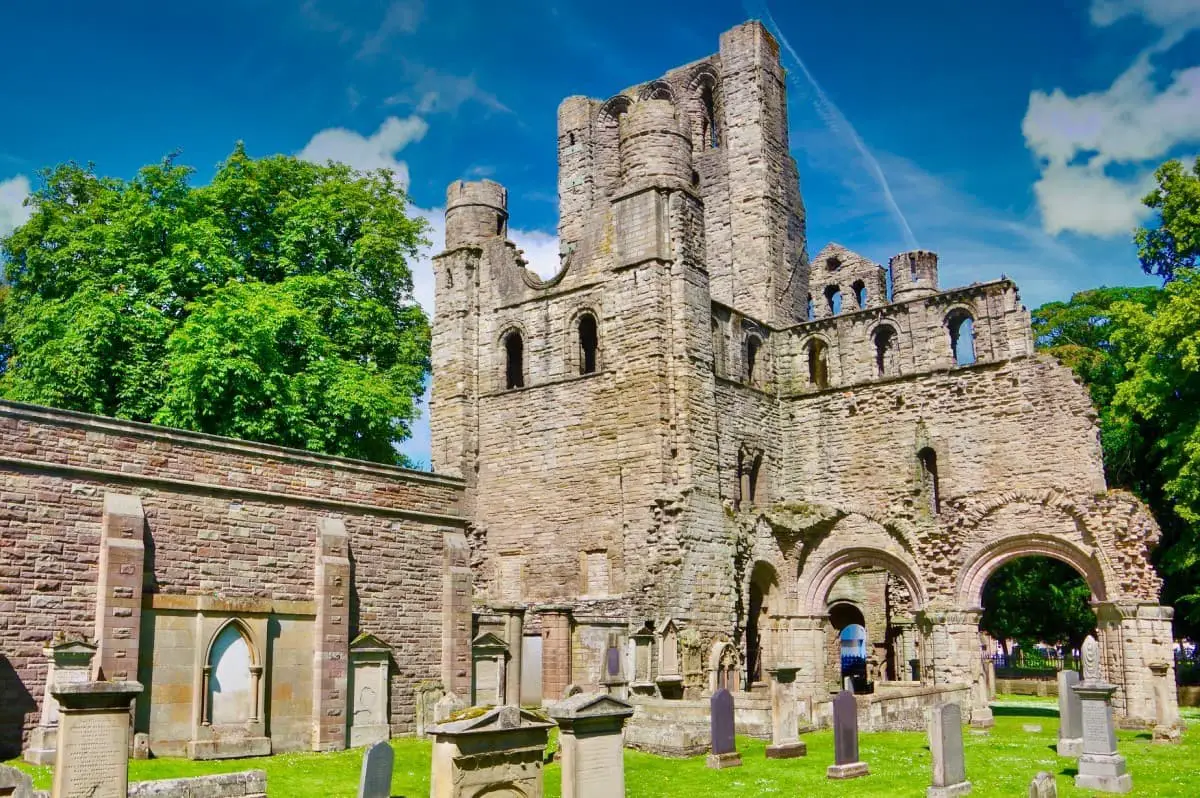
- Address: Kelso, Roxburghshire, TD5 7JF
- Opening Times: 1 Apr to 30 Sept: 9.30 pm to 5.30 pm. 1 October to 31 March: Mon, Tues, Weds, Sat and Sun, 9.30 am to 4 pm. Closed Thurs and Fri.
- Website: Kelso Abbey
Kelso Abbey is a magnificent ruined monastery that was established in 1128 by a community of Tironensian monks. The Abbey played a major role in the religious and political landscape of Scotland during the Middle Ages and even though it’s now partially in ruin its architectural grandeur is still awe-inspiring today.
Historically, Kelso Abbey was one of the wealthiest and most powerful monastic institutions in Scotland. It was a prominent religious and political centre that served as a meeting place for Scotland’s Parliament, but this influence meant that it was frequently targeted during the Anglo-Scottish wars, suffering extensive damage over time.
The biggest event associated with Kelso Abbey is that it was the crowning of James III of Scotland, while legend has it that it’s haunted by the ghost of a piper who mysteriously disappeared after going into a tunnel beneath the buildings.
Today, while only a fraction of the original structure remains, Kelso Abbey continues to captivate visitors with its architectural beauty which ensures it remains one of the most popular free attractions in the Borders.
Book Tours in Scotland
The Jim Clark Motorsport Museum
- Address: 44 Newtown Street, Duns, Berwickshire, TD11 3AU
- Opening Times: 25th Mar -30th Sept: Mon-Sat 10.30 am-1.00 pm, 2.00 pm-4.30 pm and Sun 2.00 pm-4.00 pm. 1st Oct-31st Oct: Mon-Sat, 1.00 pm-4.00 pm
- Website: The Jim Motorsport Museum
The Jim Clark Motorsport Museum, located in the charming town of Duns, is an absolute treasure trove for motorsport enthusiasts and is a fitting tribute to one of the greatest racing drivers in history, Jim Clark.
Founded in 1982, the museum was initially housed in the old Berwickshire town hall before undergoing a complete renovation in 2019 and reopening with a fresh look and a new collection of exhibits that are aimed at celebrating the life and career of the double Formula 1 world champion.
The museum houses a fantastic collection of memorabilia from Clark’s illustrious career, including his race suits, trophies, and a comprehensive photographic archive. The most remarkable exhibits are undoubtedly the beautifully restored racing cars which include a Lotus 25, a type of car Clark drove in the 1963 season, and a Lotus Cortina like the one he drove to victory in the British Saloon Car Championship in 1964.
Beyond the exhibits, the museum tells the story of Jim Clark from his early years in the Scottish Borders to his triumphs on the global stage and his untimely death. Interactive displays, films, and personal testimonials offer a vivid portrait of the man behind the legend, making it a fascinating journey into motorsport history.
Locharron of Scotland Visitor Centre

- Address: Dunsdale Road, Selkirk, Selkirkshire, TD7 5DZ
- Opening Times: Mon-Sat 9 am-5 pm, Sun 11 am – 4 pm
- Website: Locharron Visitor Centre
The Locharron of Scotland Visitor Centre is a must-visit destination for anyone eager to explore Scotland’s textile heritage. With over 70 years of experience, Locharron of Scotland is the world’s leading manufacturer of tartan and is renowned for creating high-quality tartan clothing.
As you step into the visitor centre you’ll be transported into a world of tartan thanks to a fascinating exhibition showcasing the history and production of tartan weaving through the ages. You can witness first-hand the skill and craftsmanship that goes into each tartan product as you watch weavers at work on traditional looms, after which you can purchase some traditional tartan products in the on-site shop from kilts to scarves, ties, and blankets.
For those interested in tracing their Scottish ancestry, the Locharron Weavers Shop offers a unique ‘Find Your Clan’ service where you can discover your family’s tartan and learn more about your Scottish roots, and there’s also a cosy café where you can relax with a cuppa and a selection of delicious shortbread.
Protect Your Family From Scotland's Biting Midges
- Powerful, reliable protection for up to 8 hours
- Water- and sweat resistant
- Repels midges, mosquitoes, horse flies, sand flies, fleas and ticks
- Safe for use on adults, children over 30 months and pregnant women
- Non-sticky, moisturising with a pleasant fragrance
- Packaging may vary
Philiphaugh Salmon Viewing Centre
- Address: Philiphaugh Estate Office, Selkirk, TD7 5LX
- Opening Times: Sun-Sat: 09:00 – 17:00
- Website: Philiphaugh Estate
The Philiphaugh Salmon Viewing Centre is an unusual but must-see destination situated near the town of Selkirk in the Scottish Borders. Offering a rare opportunity to observe salmon in their natural habitat, the centre is a favourite amongst nature lovers and fishing enthusiasts alike.
Established in 1998, the centre is part of the larger Philiphaugh Estate which spans an incredible 1,000 acres. It presents a unique opportunity for visitors to watch Atlantic salmon leap up the cauld (a Scottish term for a weir or small dam) in the Ettrick Water, an incredible spectacle that mainly happens during the spawning season in autumn.
The centre features underwater cameras that provide live feeds of the salmon in the river as well as interactive displays that show information about the life cycles of the salmon, their migration, and the challenges they face during their long journey.
In addition to salmon viewing, the estate is home to a number of walking trails, a community garden, and a battlefield site from the Battle of Philiphaugh in 1645, and if you’re a bird watcher, you’ll be pleased to know that the area is a haven for many bird species including heron and kingfishers.
The Philiphaugh Salmon Viewing Centre is open throughout the year, but the best time to watch the salmon is between June and November.
Mary Queen of Scots Visitor Centre
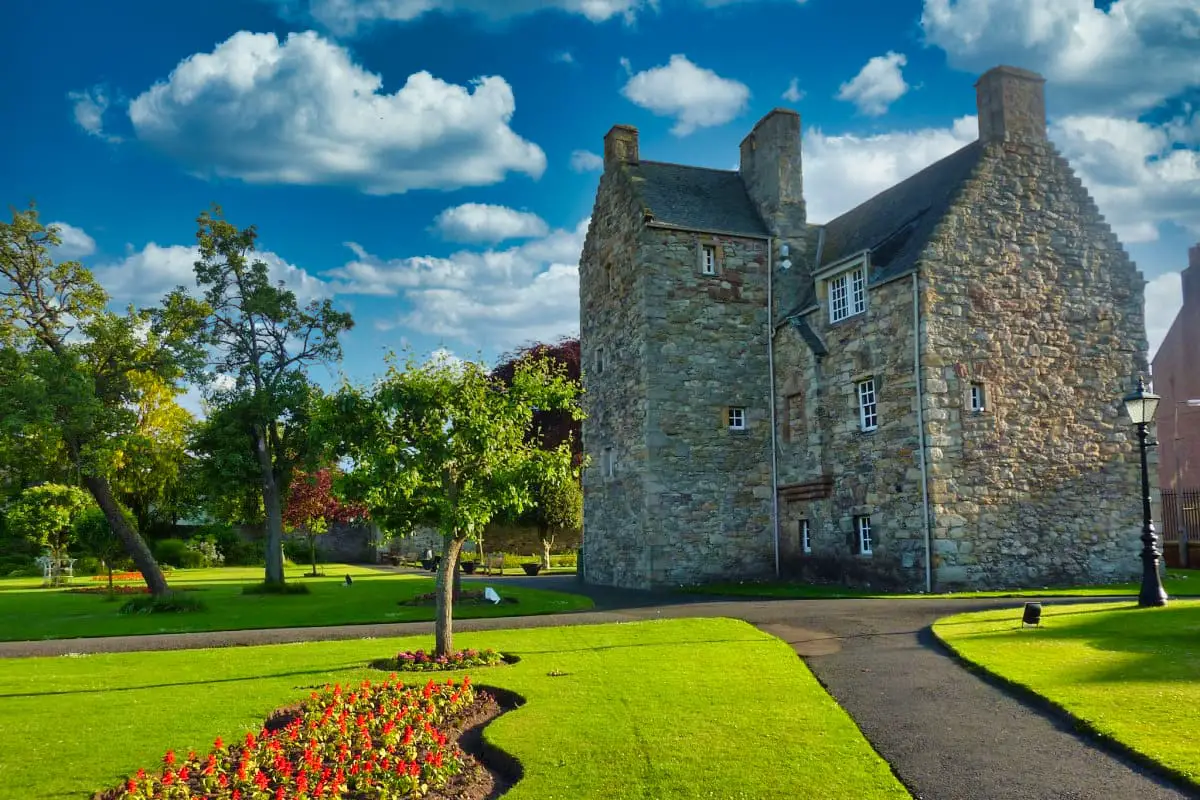
- Address: Queen Street, Jedburgh, Roxburghshire, TD8 6EN
- Opening Times: Mar-Nov: Mon-Sat 9.30 am-4.30 pm and Sun 10.30 am-4.00 pm
- Website: Mary Queen of Scots Visitor Centre
The Mary Queen of Scots Visitor Centre is a must-visit for any history aficionado. The centre offers a unique and immersive insight into the life and times of one of Scotland’s most famous and controversial monarchs, Mary Queen of Scots, in a beautifully preserved 16th-century tower house.
The interior of the house has been decorated to reflect the styles of the period and is filled with exhibits and artefacts relating to Mary’s life and reign, including letters written in her hand, personal belongings, and portraits as well as a replica of Mary’s death mask.
The visitor centre features fascinating stories about the turbulent period of Mary’s reign, from her return to Scotland after the death of her French husband to her imprisonment and eventual execution, and both children and adults will enjoy listening to the expert guides who bring it all back to life. Apart from the attractions in the visitor centre, the grounds offer fantastic views of the Scottish Borders countryside and are an ideal starting point for exploring the many nearby walking trails.
Book Tours in Scotland
St. Ronan’s Wells Visitor Centre
- Address: Wells Brae, Innerleithen, Tweeddale, EH44 6JE
- Opening Times: 25th Mar – 29th Oct: Mon-Fri 10.00 – 13.00 and 14.00 – 17.00 and Sat & Sun 14.00-17.00
- Website: St. Ronan’s Wells Visitor Centre
St. Ronan’s Wells Visitor Centre is an unusual attraction near Innerleithen in the Scottish Borders. The centre has a history dating back to the 1820s when it was established as a spa resort and was named after St. Ronan, a 7th-century Irish missionary who was said to have discovered a spring with healing properties in the area.
Today, the visitor centre serves as a museum showcasing the history of the spa and its significance in the local area where visitors can explore a variety of exhibits from displays about the mineral water’s health benefits to the rituals of Victorian spa treatments.
The visitor centre boasts a garden area where visitors can relax, and it also serves as a venue for various events that include craft fairs, garden festivals, and local history talks. As far as amenities go, there’s a gift shop offering a range of souvenirs and local craft items, public restrooms, and wheelchair access.
St. Abbs Head Nature Reserve

- Address: St Abbs, Eyemouth, Borders, TD14 5QF
- Opening Times: Open year-round.
- Website: St. Abbs Head Nature Reserve
St. Abbs Head Nature Reserve is an idyllic spot on the coastline near the quaint fishing village of St. Abbs. Spread across 200 acres, it stretches out to the sea along a dramatic clifftop path that offers breathtaking views of the North Sea and beyond. The nature reserve is characterized by its towering cliff faces that dramatically plunge into the sea, creating a safe haven for countless nesting seabirds.
St. Abbs Head is a wildlife lover’s paradise as it’s home to thousands of seabirds including guillemots, kittiwakes, razorbills, and puffins, while the surrounding waters teem with marine life from playful seals to dolphins.
The most notable landmark at the reserve is the iconic St. Abbs Head Lighthouse which was built in the 19th century and is still in use today. Visitors can also explore the remnants of Fast Castle (an ancient fortress) to the north, and the lovely harbour of Eyemouth to the south.
Birdwatching is the most popular pastime at St. Abbs Head but it’s also a great location for diving and snorkelling, as is hiking along the clifftop paths and enjoying the spectacular coastal views.
Protect Your Family From Scotland's Biting Midges
- Powerful, reliable protection for up to 8 hours
- Water- and sweat resistant
- Repels midges, mosquitoes, horse flies, sand flies, fleas and ticks
- Safe for use on adults, children over 30 months and pregnant women
- Non-sticky, moisturising with a pleasant fragrance
- Packaging may vary
The Polish Map of Scotland
- Address: Barony Castle Hotel UK, Eddleston, EH45 8QW
- Opening Times: Open year-round.
- Website: The Polish Map of Scotland
The Polish Map of Scotland is a large-scale, three-dimensional, outdoor concrete map located on the grounds of Barony Castle in Eddleston. It was built between 1974 and 1979 and is believed to be the largest physical relief map in the world.
The map was conceived and created by Jan Tomasik, a Polish war veteran who had served alongside Scottish soldiers during World War II. After the war, Tomasik became a successful hotelier, acquiring Barony Castle and turning it into a hotel (I’ve stayed there several times and can confirm it’s a superb place to stay). The map was an expression of his gratitude towards Scotland for its support of Poland during the war.
The map’s construction involved the careful shaping of concrete over a wire mesh laid out on the ground and it’s impressively accurate, with topographical features like mountains, valleys, and bodies of water all represented in detail. It measures approximately 50m by 40m with a scale of 1:10,000.
The map was originally filled with water to highlight Scotland’s lochs and coastal areas but it fell into disrepair and was almost forgotten until 2010 when it was rediscovered and a restoration effort was launched which led to it being officially recognized as a monument of national importance in 2014.
As for other attractions, Barony Castle itself is an absolute must-visit. The 16th-century tower house was expanded over the centuries into a mansion and is now a hotel with its own restaurant, spa, and luxury rooms. It’s set in 25 acres of formal gardens and woodland, and nearby, you can visit the picturesque town of Peebles or take a scenic drive to Edinburgh which is less than an hour away.




